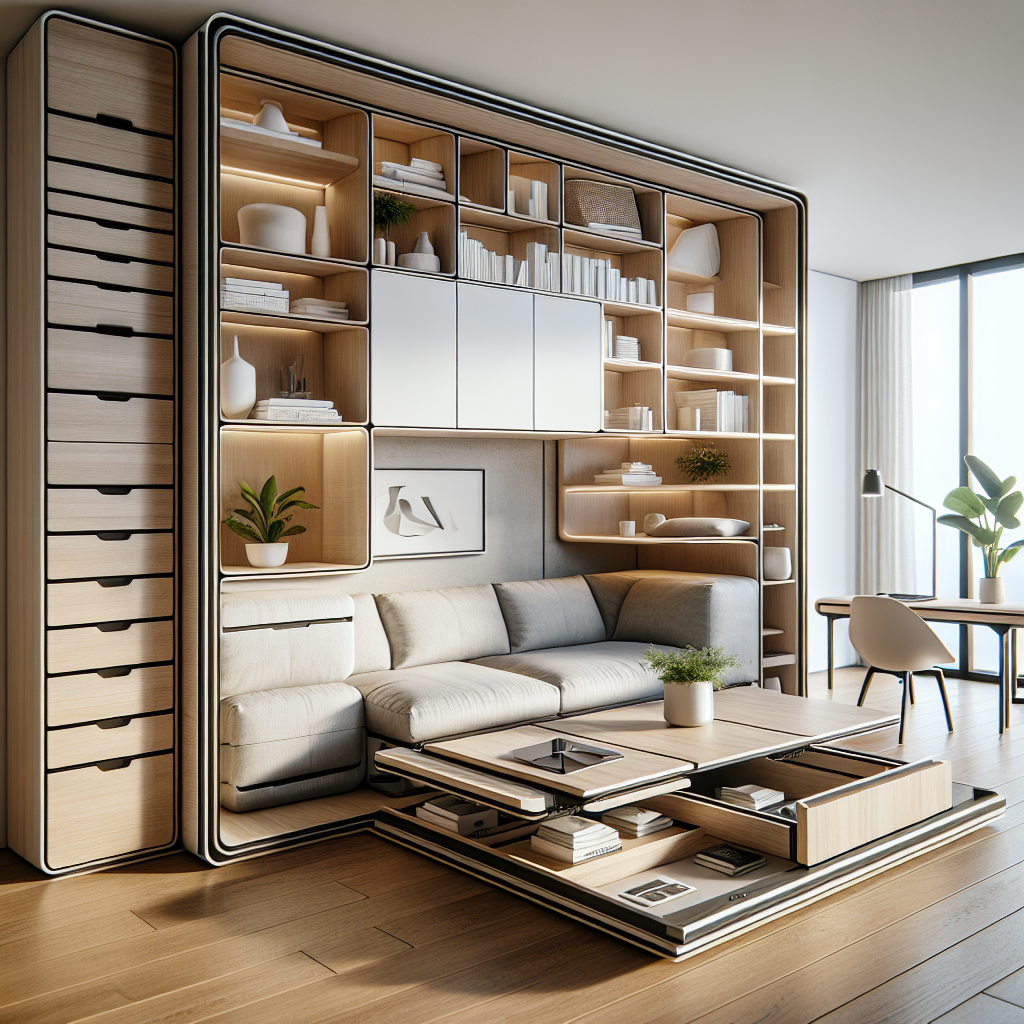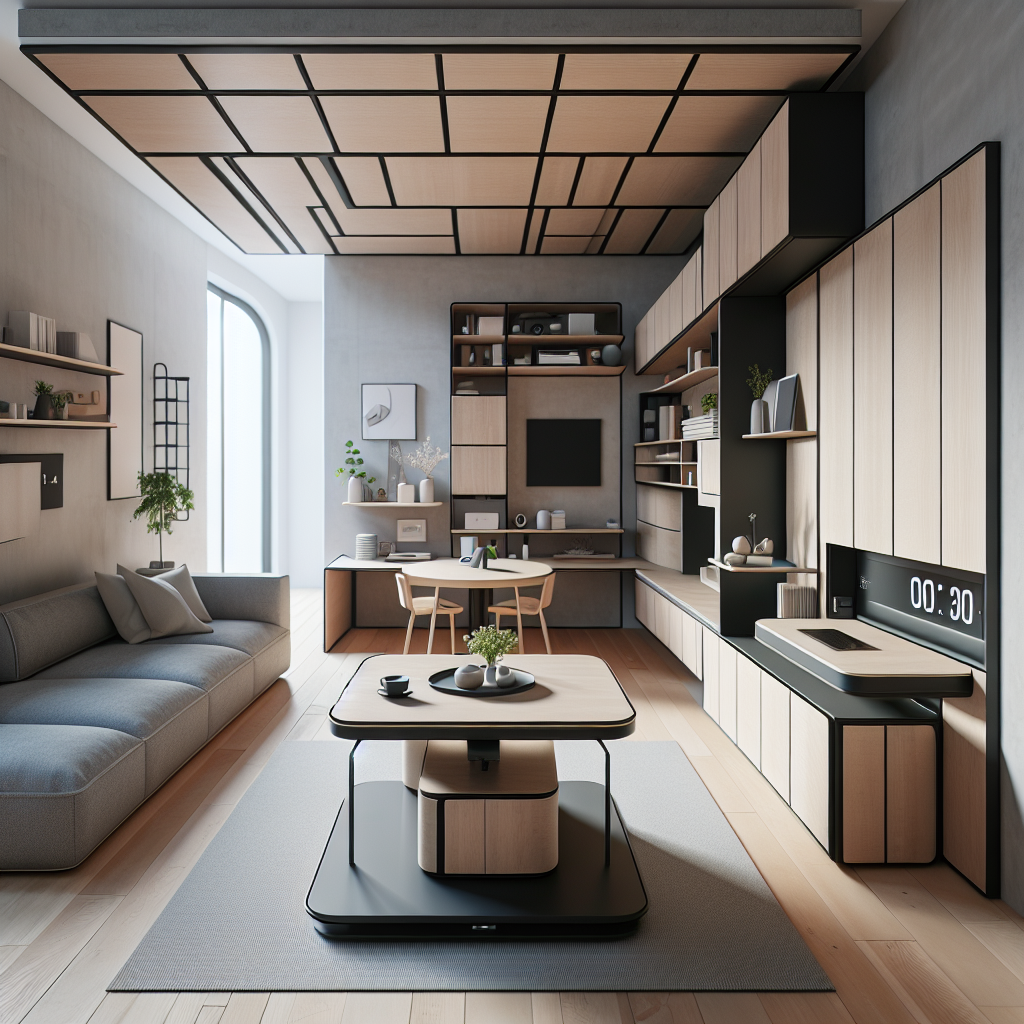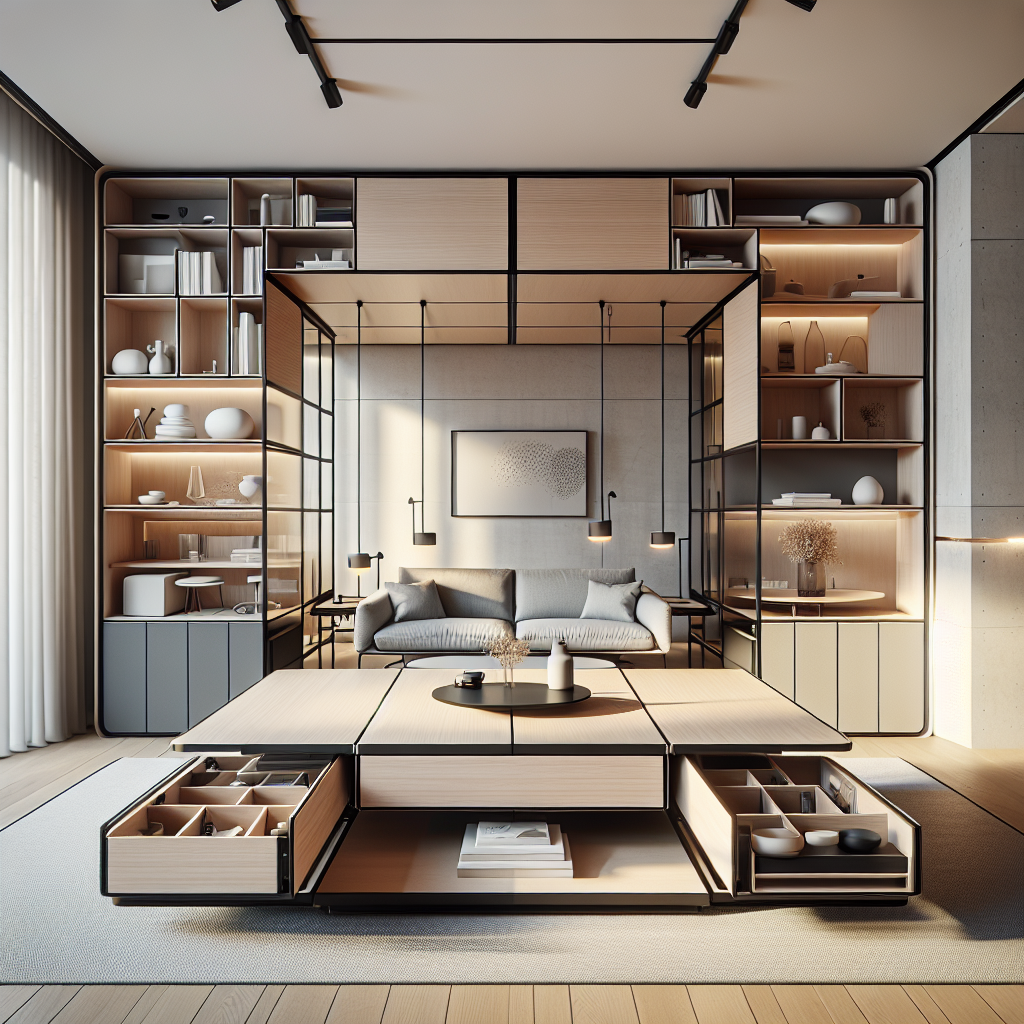Space-Saving Transformable Furniture: Innovations for Compact Living

Revolutionizing Compact Living with Space-Saving Transformable Furniture
As urban dwellings become increasingly compact, the demand for innovative furniture solutions that maximize space without compromising on style or functionality has soared. In the realm of design and architecture, a new breed of furniture is making waves – space-saving transformable furniture. These ingenious pieces are not just furniture; they are multifunctional marvels that adapt to the ever-changing needs of modern living.
Imagine a sleek, contemporary coffee table that effortlessly lifts and expands into a full dining table, or a wall-mounted cabinet that unfolds into a cozy guest bed. These aren’t scenes from a futuristic movie; they are real, tangible innovations available today. Transformable furniture, also known as multi-purpose or convertible furniture, is a testament to the creativity and engineering prowess that define the current design landscape.
The Art of Multi-Functionality in Furniture Design
Designers and manufacturers are constantly pushing the boundaries to create pieces that are not only aesthetically pleasing but also brimming with functionality. The concept of a single piece serving multiple purposes is not new, yet the sophistication with which it is being executed today is unparalleled. The space-saving furniture market is brimming with options, from modular sofas that transform into bunk beds to desks that conceal ample storage space.
These transformative pieces are a boon for those residing in micro-apartments or homes with limited square footage. They embody the principles of smart design, where every inch is optimized for utility while maintaining an uncluttered and harmonious aesthetic. Brands like Ori Systems and Resource Furniture are at the forefront of this movement, offering solutions that are as stylish as they are space-efficient.
Material Innovation and Technological Integration
The evolution of transformable furniture is not solely a triumph of design; it is equally a result of advancements in materials and technology. Lightweight yet durable materials allow for easy maneuverability of convertible pieces, while advanced mechanisms ensure smooth transitions between different forms. The integration of technology, such as automated or app-controlled systems, adds another layer of convenience, allowing users to reconfigure their spaces with the touch of a button.
Take, for instance, the modular shelving units that can be reconfigured to serve as room dividers or the height-adjustable tables that cater to both sitting and standing work preferences. These pieces are not just furniture; they are interactive elements that enhance the livability of a space.
Customization and Personalization
One of the hallmarks of modern transformable furniture is the ability to customize and personalize according to individual needs. Consumers are no longer satisfied with one-size-fits-all solutions; they crave furniture that reflects their unique lifestyle and aesthetic preferences. This has led to an increase in customizable options, where everything from color and finish to size and configuration can be tailored to the user’s specifications.
Moreover, the rise of DIY culture and platforms like IKEA has empowered individuals to take a hands-on approach to their interiors. The modularity of transformable furniture fits perfectly within this paradigm, offering endless possibilities for creative expression.
Sustainability and Eco-Friendly Practices
In the face of pressing environmental concerns, sustainability has become a crucial aspect of furniture design. Transformable furniture aligns with this ethos by reducing the need for multiple pieces, thereby minimizing material usage and waste. Many designers are also embracing eco-friendly materials and production methods, further solidifying the role of transformable furniture in the movement towards sustainable living.
For example, the use of recycled plastics and reclaimed wood in furniture construction not only reduces the environmental footprint but also adds character and history to the pieces. This commitment to sustainability is not just a trend; it is a reflection of a deeper shift in consumer values and industry practices.
Examples of Transformable Furniture in Action
Let’s delve into some real-world examples that illustrate the transformative power of this furniture genre. The Doc Sofa Bunk Bed by Clei is a prime example, serving as a comfortable couch by day and converting into a bunk bed by night, complete with a ladder and safety rail. Then there’s the Goliath Table by Resource Furniture, which can expand from a mere 17-inch console to a 115-inch dining table, accommodating up to ten guests.
On the cutting edge of technology, the Ori Cloud Bed descends from the ceiling, transforming a living area into a bedroom at the press of a button. These examples underscore the versatility and innovation inherent in transformable furniture design.
Transformable Furniture as a Reflection of Modern Lifestyles
The surge in popularity of transformable furniture is more than a passing fad; it is a reflection of the evolving lifestyles and priorities of contemporary society. As people embrace minimalism, flexibility, and sustainability, their living spaces must adapt accordingly. Transformable furniture is not just about saving space; it’s about enhancing the quality of life through thoughtful design.
As we continue to reimagine the possibilities of our living environments, transformable furniture stands as a beacon of innovation. It challenges us to think beyond traditional boundaries and to embrace a future where our homes are as dynamic and multifaceted as we are.
For those seeking to delve deeper into the world of innovative design, exploring articles on mainifesto.com can provide further insights into the latest trends and discussions shaping the industry. Whether it’s examining the sustainable design practices that are becoming increasingly important or exploring the future of smart homes, there is a wealth of knowledge to be discovered.
Ultimately, the journey towards compact, efficient living is not just about furniture—it’s about crafting spaces that resonate with our values and aspirations. Space-saving transformable furniture is more than a mere commodity; it is a symbol of adaptability, innovation, and the human spirit’s unyielding quest for betterment.







